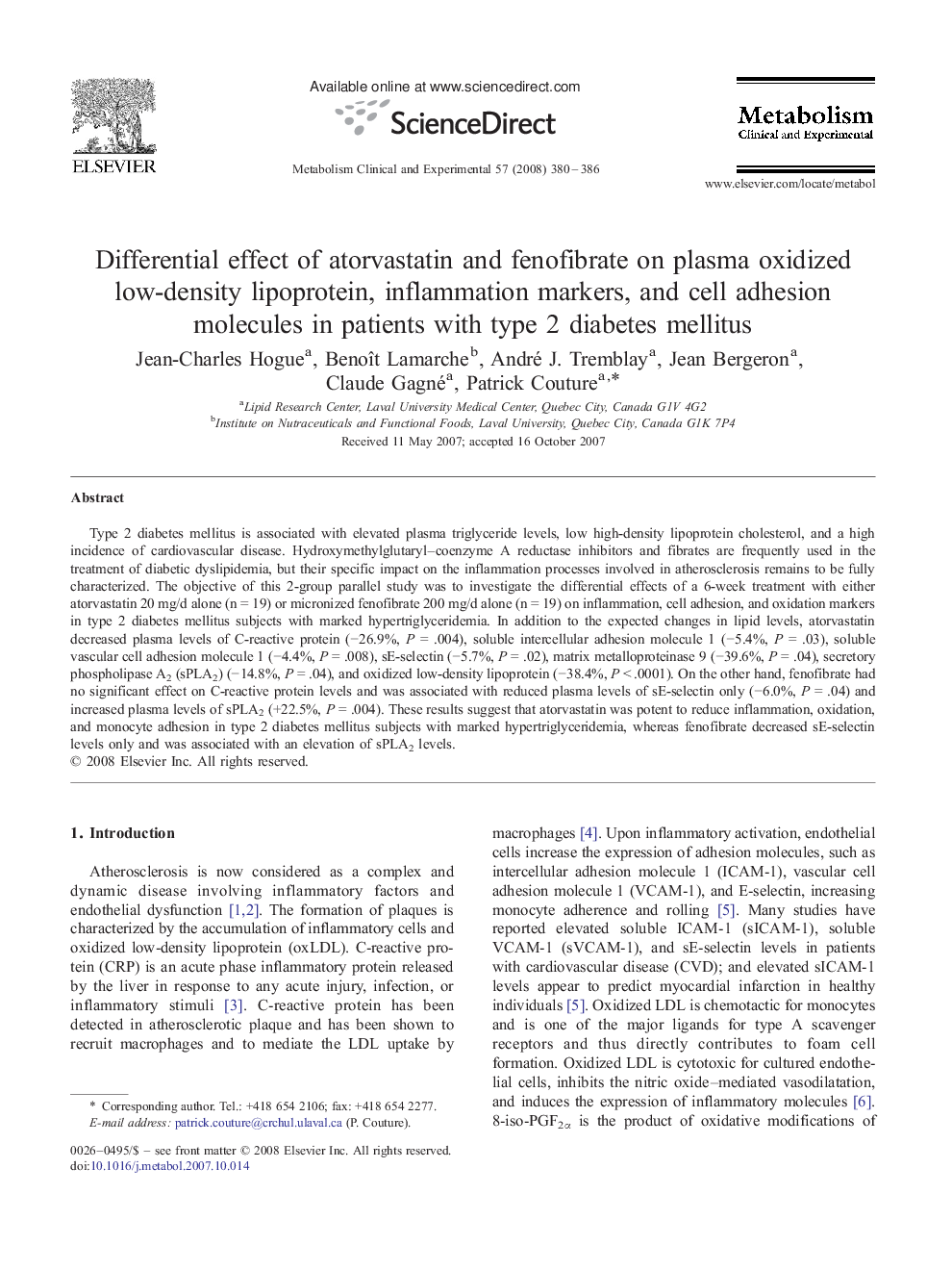| Article ID | Journal | Published Year | Pages | File Type |
|---|---|---|---|---|
| 2807228 | Metabolism | 2008 | 7 Pages |
Abstract
Type 2 diabetes mellitus is associated with elevated plasma triglyceride levels, low high-density lipoprotein cholesterol, and a high incidence of cardiovascular disease. Hydroxymethylglutaryl-coenzyme A reductase inhibitors and fibrates are frequently used in the treatment of diabetic dyslipidemia, but their specific impact on the inflammation processes involved in atherosclerosis remains to be fully characterized. The objective of this 2-group parallel study was to investigate the differential effects of a 6-week treatment with either atorvastatin 20 mg/d alone (n = 19) or micronized fenofibrate 200 mg/d alone (n = 19) on inflammation, cell adhesion, and oxidation markers in type 2 diabetes mellitus subjects with marked hypertriglyceridemia. In addition to the expected changes in lipid levels, atorvastatin decreased plasma levels of C-reactive protein (â26.9%, P = .004), soluble intercellular adhesion molecule 1 (â5.4%, P = .03), soluble vascular cell adhesion molecule 1 (â4.4%, P = .008), sE-selectin (â5.7%, P = .02), matrix metalloproteinase 9 (â39.6%, P = .04), secretory phospholipase A2 (sPLA2) (â14.8%, P = .04), and oxidized low-density lipoprotein (â38.4%, P < .0001). On the other hand, fenofibrate had no significant effect on C-reactive protein levels and was associated with reduced plasma levels of sE-selectin only (â6.0%, P = .04) and increased plasma levels of sPLA2 (+22.5%, P = .004). These results suggest that atorvastatin was potent to reduce inflammation, oxidation, and monocyte adhesion in type 2 diabetes mellitus subjects with marked hypertriglyceridemia, whereas fenofibrate decreased sE-selectin levels only and was associated with an elevation of sPLA2 levels.
Related Topics
Life Sciences
Biochemistry, Genetics and Molecular Biology
Endocrinology
Authors
Jean-Charles Hogue, Benoît Lamarche, André J. Tremblay, Jean Bergeron, Claude Gagné, Patrick Couture,
